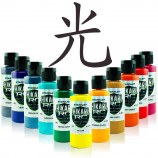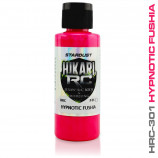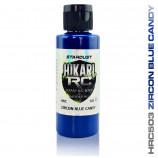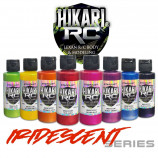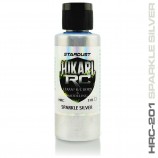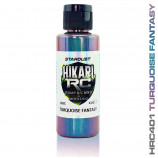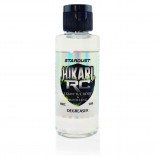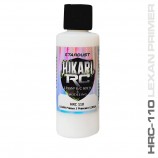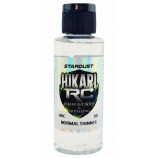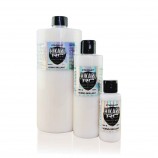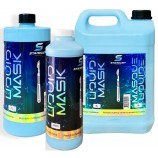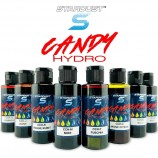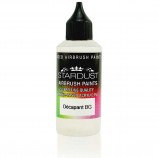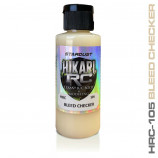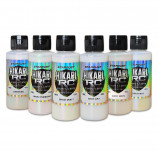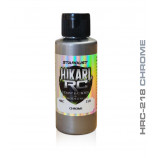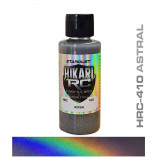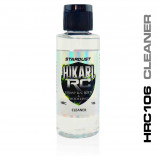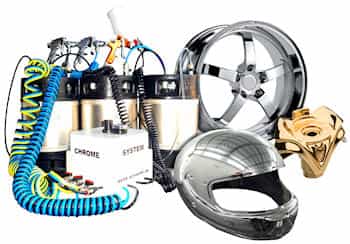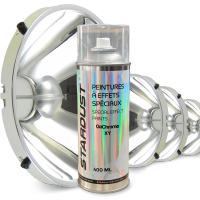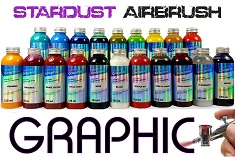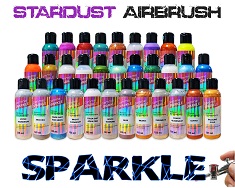All Products are in stock
and shipped from France.
Delivery within 48 hours.
and shipped from France.
Delivery within 48 hours.
Our categories
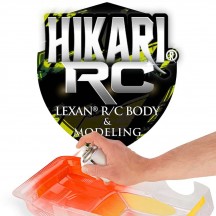
Paints for Lexan and radio-controlled models
When talking about model making, two main categories stand out: model making and radio-controlled model making (RC*), where model paints are used for decoration, presented here with the « HIKARI RC » range.
Hikari offers RC model enthusiasts a magnificent range of colors, primers and effects, not to mention a few specialties such as the liquid ...
Read more-
paints for RC model making on lexan - 29 Colors Racing HIKARI R/C - HRC000
In Stock 8.53£Opaque paint series for radio controlled models 29 graphic opaque tints 60ml or 250ml formatWater-based formula - especially for LEXAN®.Ready to use airbrush paintVarious express delivery options -
HRC300 - Fluo paint for RC and lexan models - 10 Colors HIKARI R/C
In Stock 8.80£Fluorescent Lexan Paints 10 ready-to-use fluorescent shades Special LEXAN® water-based formula For airbrush or spray gun -
HRC500 - Lexan Candy paint for RC models - HIKARI
In Stock 8.80£11 transparent CANDY colors for RC models Special Lexan acrylic formula 15 % off discount 69 ml bottle -
HRC600 - Iridescent paint for HIKARI RC Models on lexan
In Stock 9.72£15% more free product (69ml) 8 Pure colors with iridescent highlights paint for RC models Guaranteed adhesion on LEXAN®. -
HRC200 - Metallic and pearlescent paints for Radio-controlled models on lexan HIKARI RC
In Stock 10.50£Pearlescent or metallic paint series for radio-controlled models 21 acrylic opaque graphic shades to the unit.Or 19-color kit (HRC218 & HRC230 not included)Water-based formula for LEXAN®.Ready to use for airbrush -
HRC400 - Color change paint for RC models on lexan - HIKARI RC
In Stock 13.50£Scarabeus airbrush colors RC models paint 6 colors changing shades Guaranteed adhesion formula on LEXAN®. -
HRC104 - Hikari RC Model Degreaser - For HRC paints and Lexan bodies
In Stock 5.40£15% off discount HRC paints and Lexan bodies degreaser Available in 69 ml and 250 ml bottles -
HRC110 - Adhesion promoter for polycarbonate and Lexan - Hikari RC
In Stock 8.00£Water-based acrylic products format 60ml / 250ml Transparent gloss topcoat for an unbeatable grip on LEXAN fairings -
HRC100 - Hikari RC paint thinner for RC model making
In Stock 10.80£Format 60ml / 250ml / 1L / 5L to choose fromNon-hazardous acrylic thinnerHardens and improves the dry paint filmHikari range for RC models -
Special Lexan clearcoat and RC models - acrylic gloss or matte
In Stock 7.78£Clear Lexan clearcoat 2 versions to choose from : gloss or matte 60ml / 250ml / 1L / 5L In stock, express delivery anywhere in the world -
HIKARI liquid mask for RC models - transparent masking without latex
In Stock 7.80£Liquid Mask HIKARI for lexanFor radio-controlled modelssizes : 500 ml / 1 L / 5 LSuitable for airbrush or brush -
HIKARI anti fuel and anti gravel protection for RC models
In Stock 24.00£Nitro Block hydro coating for RC models Water based product, without solvents 500 ml, 1 L, 5 L size Available in White or Transparent In stock : delivery within 48 hours -
Candy concentrated transparent inks Hydro 60ml
In Stock 10.80£Candy water dilutable dyes8 concentrated colors to choose fromin 60 ml bottleUV resistantNon-hazardous product -
Stripping cleaner BG for airbrushes and acrylic paints
In Stock 3.78£Mild stripping solvent Different capacities : 60 ml 250 ml 1 Liter 5 Liters -
HRC105 - Bleed Checker - Anti-Color Migration Sealant for Airbrushing
In Stock 7.78£Candy Migration Blocker Bleed Checker for Airbrush Paints Acrylic Formula Hikari RC 60 ml or 250 ml Products in stock and shipped the same day if ordered before 11a.m -
HIKARI RC Ghost series paints – 6 pearlescent transparent colours for RC model painting
In Stock 10.34£Hikari RC Ghost series – 6 pearlescent transparent Lexan paints 60ml format Interference colours for airbrush Gold (HRC420) Green (HRC421) Turquoise (HRC422) Blue (HRC423) Violet (HRC424) Red (HRC425) -
Hikari RC chrome paint – chrome effect for RC modelling
In Stock 13.50£Chrome effect paint for Lexan – Hikari RC Applicable with an airbrush 0.18 – 0.5 mm Applied from the inside of the Lexan Flammable, non-harmful paint -
Holographic Paint for Radio Modeling ASTRAL – HIKARI RC
In Stock 16.20£3D Holographic RC Paint for Radio Modeling Rainbow Prismatic EffectSemi TransparentApplication with AirbrushesNon-Hazardous Flammable Product -
Lexan Cleaner – Electrostatic Degreaser - Hikari RC
In Stock 5.40£Bodywork cleaner for Lexan – HIKARI RCLeaves no residueAnti static electricityNon-harmful flammable product60ml – 250ml - 1L























